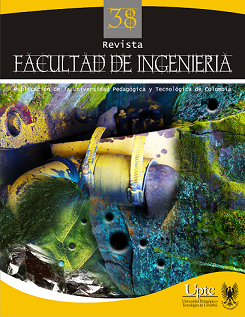Corrosion Resistance at High Temperature of NiCrAlY and NiCrFeNbMoTiAl Coatings Deposited by APS

Abstract
The corrosion at high temperature in pipes used in steam generating equipment (boilers), has been recognized as a serious problem, that results in the pipes thinning and therefore the equipments failure. In the last decade there has been a rise in investigations involving protective coatings to help, in some way to extend the useful life of these equipments. This investigation determined the NiCrFeNbMoTiAl and NiCrAlY coatings behavior, deposited by plasma-assisted thermal projection spraying (APS) on the alloy SA213 T22 (2¼Cr -1Mo), in acorrosive environment of 80 % V2O5- 20 % K2SO4 to 800 °C. The kinetics corrosion values were determined by linear polarization resistance (LPR) and electrochemical impedance spectroscopy (EIS). The results obtained show a lower kinetic corrosion on the NiCrFeNbMoTiAl coating than the NiCrAlY coating, confirmed by the SEM, Scanning Electron Microscopy.Keywords
hot corrosion, electrochemical, coatings, APS
References
- M. Pomeroy, “Coatings for gas turbine materials and long term stability issues”, Materials and Desing, vol. 26, pp. 223-231, 2005.
- J. Gómez, A. Salazar, C. Múnez, V. Utrilla y P. Poza, “Análisis de la degradación de recubrimientos de barrera térmica por espectroscopia de impedancia electroquímica”, Boletín de la Sociedad Española de Cerámica y Vidrio, vol. 46, pp. 232-239, 2007.
- A. Agüero, “Recubrimientos contra la corrosión a alta temperatura, para componentes de turbinas de gas”, Revista de Metalurgia, vol. 43, pp. 384-398, 2007.
- B. Sidhu and S. Prakash, “Evaluation of the corrosion behavior of plasma – sprayed Ni3Al coatings on steel in oxidation and molten salts environments at 900°C”. Surface and Coatings Technology, vol. 166, pp. 89-100, 2003.
- B. Hinderliter, S. Croll, D. Tallman, Q. Su and G. Bierwagen, “Interpretation of EIS data from accelerated exposure of coated metals based on modeling of coatings physical properties”, Electrochemical ACTA, vol. 51, pp. 4505-4515, 2006.
- F. Floyd, S. Avudalappan, J. Gibson, B. Mehta, P. Smith, T. Povder and J. Escarsega, “Using electrochemical impedance spectroscopy to predict the corrosion resistance of unexposed coated metal panels”, Progress in Organic Coatings, vol. 50, pp. 8-34, 2009.
- ASTM G–102. Calculation of corrosion rates and related information from electrochemical measurements. American Society for Testing and Materials.EE.UU.,1997.
- ASTM G–59. Standard test method for conducting potentiodynamic polarization resistance measurements.American Society for Testing and Materials. EE.UU.,1997.
- ASTM G–3. Standard test for conventions applicable to electrochemical measurements in corrosion testing.American Society for Testing and Materials. EE.UU.,1999.
- C. Zhang, C. Zhou, S. Gong, H. Li and H. Xu, “Evaluation of thermal barrier coating exposed to different oxygen partial pressure environments by impedance spectroscopy”, Surface and Coatings Technology, vol. 201, pp. 446-451, 2006.
- J. Tristancho, J. Chacón, D. Peña, C. Gaona, J. Gonzáles, A. Martínez and F. Almeraya, “Hot corrosiónbehaviour of NiCrFeNbMoTiAl coating in molten salts at 700°C by electrochemical techniques”, International Journal of Electrochemical Science, vol. 6, pp. 4323-441, 2011.
- C. Zeng, W. Wang and W. Wu, “Electrochemical Impedance models for molten salts corrosion”, Corrosion Science, vol. 43, pp. 787-801, 2001.
- J. Tristancho, M. Sánchez, R. Sandoval, V. Orozco, F. Almeraya, J. Chacón, J. Gonzáles and A. Martínez, “Electrochemical impedance spectroscopy investigation of alloy inconel 718 in molten salts at high temperatura”, International Journal of Electrchemical Science, vol. 6, pp. 419-431, 2001.
Downloads
Download data is not yet available.